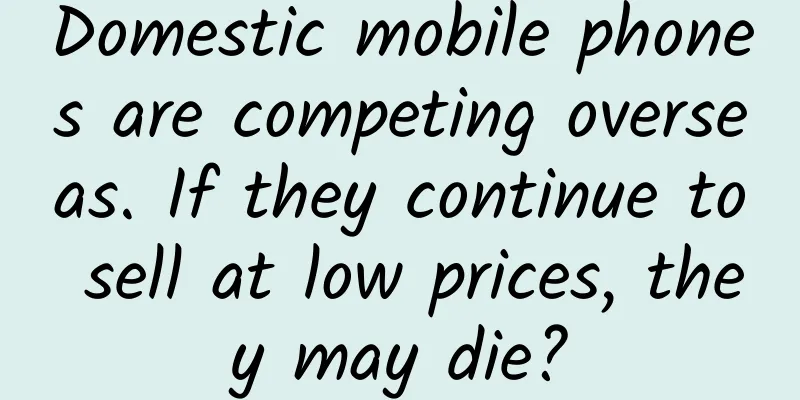The mobile phone industry presses the "recovery button", 5G becomes a hope for breakthrough

|
With the effective control of the COVID-19 epidemic in China, the resumption of work and production in the mobile phone industry has accelerated, the production capacity of the upstream supply chain of mobile phones is gradually recovering, and offline mobile phone terminal stores are also beginning to open their doors to customers. However, on the one hand, since it will take some time for the full recovery of the supply chain production capacity, major mobile phone manufacturers will still face the problem of "difficult supply" in the short term. On the other hand, under the background of relatively low consumer enthusiasm, most mobile phone manufacturers will still face the pressure of continued low sales.
Offline stores are crowded with customers In the mobile phone market, where the trend of online and offline integration is becoming more and more obvious, offline physical store sales account for the majority of sales, whether it is traditional manufacturers such as Huawei, OPPO, and vivo, or Xiaomi with Internet genes. In February, when the epidemic was severe, offline stores in the mobile phone market were almost shut down, and the losses were heavy. After entering March, as the epidemic situation improved, offline mobile phone stores resumed business one after another, but the sparse customer flow and bleak sales situation did not change much. On March 29, Feixiang.com reporters revisited several mobile phone stores they had visited before, including channel partner stores of brands such as Huawei, OPPO, and vivo. Although the number of store visitors has increased compared to last month, the overall customer flow has not yet returned to the pre-epidemic level. In Huawei stores, some consumers stopped to experience the newly released Huawei P40 mobile phone, but basically no consumers had the intention to buy the phone within 1 hour. A mobile phone shopping guide told reporters that since the store resumed business, the sales situation has not improved much. The reporter came to the Apple Experience Store on the first floor. The situation here was relatively better. Due to the need to control the number of people entering the store, there were occasional queues. There were about 20 consumers in the store experiencing various Apple products. The offline market is weak, and mobile phone manufacturers are trying to save the market by switching to online, but the overall weak consumption still makes the mobile phone market usher in the most bleak start. According to statistics from market research organization GFK, the domestic mobile phone market in February this year reached the "absolute lowest point" in recent years, with monthly sales of less than 11 million units, an overall decline of about 63%. GFK predicts that in the first quarter of this year, the scale of China's mobile phone market will not exceed 60 million units, a year-on-year decline of 38%. "In the short term, it is consumption that is affected; in the medium term, it is supply chain coordination; and in the long term, it is purchasing power." Previously, when talking about the impact of the epidemic on the mobile phone market, Lu Weibing, vice president of Xiaomi Group, said that it would take time for upstream OEM factories and other supply chain links to regain their production rhythm, and for users to restore their consumer confidence. Supply chain recovery accelerates to make up for "debts" Under the influence of the epidemic, most mobile phone supply chain companies have postponed their resumption of work, which will directly affect the global mobile phone industry chain. IDC research points out that overall, the global terminal supply chain may face a shortage of inventory of about 1.5 months. If the epidemic lasts too long, it will be difficult for best-selling models and newly launched models to meet production requirements. In early February, OPPO Vice President Shen Yiren expressed his concerns on Weibo about the impact of the epidemic on OPPO Find X2's production capacity: "Supply will be tight in the early stage, because if the production capacity of a certain link in the supply chain (even the packaging box) is affected, the production capacity of the entire machine will be affected." However, as the epidemic situation improved in March, upstream mobile phone companies began to speed up their resumption of work, which is undoubtedly a good thing for mobile phone manufacturers. OPPO, which has its own mobile phone manufacturing production line, has an overall return-to-work rate of nearly 90% of its employees nationwide as of March 20. Except for Hubei, OPPO's factories across the country have gradually restored production capacity, and the return-to-work rate in industrial parks has exceeded 90%, among which the return-to-work rate of employees in Dongguan Chang'an Industrial Park is about 95%. According to official news from Xiaomi, as of March 19, the overall resumption rate of Xiaomi's supply chain exceeded 80%, and the production factory of Redmi K30 Pro has resumed work in full. Although the short-term crisis of the supply chain has been resolved, the epidemic still has a longer-term impact on the mobile phone industry chain. Originally, February and March were the final testing stage before the release and mass production of flagship products of many domestic manufacturers, and also the debugging stage of products planned to be released in the first half of the year. With the changes in product plans in the first half of the year, mid-term and even long-term product plans may also need to be adjusted, which will be a test for the collaboration and rapid adjustment capabilities between manufacturers and supply chain partners. 5G becomes a hope for breakthrough after “Black February” The outbreak has disrupted the rhythm of the mobile phone market in 2020. According to the latest report from research firm ABI Research, the epidemic has caused large-scale disruptions in smartphone production lines, labor shortages, and poor logistics, leading to stagnation in related supply chains. It is expected that smartphone production will drop by 30% in the first half of 2020. However, as supply capacity gradually recovers, the mobile phone market may show a "U"-shaped rebound in the second half of the year, and the industry is generally optimistic about the market opportunities brought by 5G. Previously, industry experts had predicted that 2020 would be an important node for 5G promotion and user replacement, and consumers would turn to 5G in large numbers, forming a new wave of replacement. Although the timing of the 5G replacement wave has been postponed due to the impact of the epidemic, the overall internal driving force of the 5G mobile phone market will rebound and even grow to a certain extent in the second half of the year as the epidemic passes. According to the forecast of GFK, a third-party research company, the global sales of 5G mobile phones are expected to reach 170 million units this year, of which 5G mobile phone sales in China may reach 110 million units, accounting for 65% of the global 5G mobile phone sales. In addition, the latest data released by the Ministry of Industry and Information Technology shows that as of March 26, there are 76 types of 5G mobile phone products in my country, with cumulative shipments exceeding 26 million units, of which more than 13 million units were shipped in 2020. Meng Pu, chairman of Qualcomm China, said, "Under this epidemic, China has proposed the development of "new infrastructure" to elevate the development of 5G to a new level. At present, operators have vigorously promoted the construction of 5G networks to try to offset the impact of the epidemic. The development scale and speed of our industry are inseparable from the support and promotion of operators. Therefore, with the active construction of 5G networks by operators, China's 5G market has a stronger driving force this year. Therefore, when we look back at the end of this year, perhaps we will find that this will offset the impact of the epidemic in the first quarter." Conclusion: Crisis breeds new opportunities. After the "Black February", the mobile phone market will usher in a new beginning, and suppressed consumer demand will be released again. For the entire industry, this wave of 5G replacement will benefit those "players" who are prepared in technology, quality, and product strength. How to divide the 5G market pie will be the key to success for mobile phone manufacturers in the second half of the year. |
<<: After 9 years of waiting, WeChat night mode is finally here! Experience the new WeChat version
>>: Starting today, WeChat can transfer money to QQ
Recommend
Nikkei reports that Apple is considering moving 15-30% of its hardware production capacity from China
Apple is exploring moving 15% to 30% of its hardw...
How to increase the click-through rate of the massive Qianchuan in the direct broadcast room?
“What is the acceptable click-through rate?” Rega...
Tao Piaopiao app product experience report: When will the fragmentation of the film market end, and will it still be necessary to continue to burn money in the future?
Large-scale ticket subsidies and the popularity o...
Is the consecrated Wenchang Pagoda really useful?
There is a reason why the Wenchang Tower has been...
How Li Jiaqi and Perfect Diary use WeChat private domain traffic
The current first-line live-streaming influencers...
When placing Tik Tok ads, should you choose FEED stream or DOU+? Pure dry goods!
In May, ByteDance launched the FEED direct live b...
Start a course_C language programming 4
Start a course_Introduction to C language program...
How to play with information flow advertising? Improving CTR is the key to gaining exposure
As an important part of native advertising, infor...
The number of pulsars discovered by the "China Sky Eye" exceeds 1,000! | Expo Daily
Your best "insider" in the scientific c...
"The vegetables you love to eat are soaked in formaldehyde to keep them fresh"? !
Have you ever seen such an article circulating in...
User Recall Practice: SMS Traffic Generation
The uninstall volume of most apps is increasing, ...
A complete guide to starting a new Tik Tok account!
1. Background The development of technology is th...
A complete guide to WeChat public account advertising promotion!
According to data released by the Enterprise Thin...
Using OpenGL to generate transition effects in mobile applications
Author | jzg, a senior front-end development engi...









